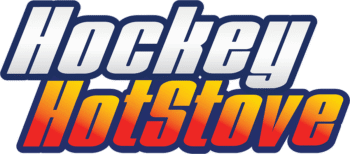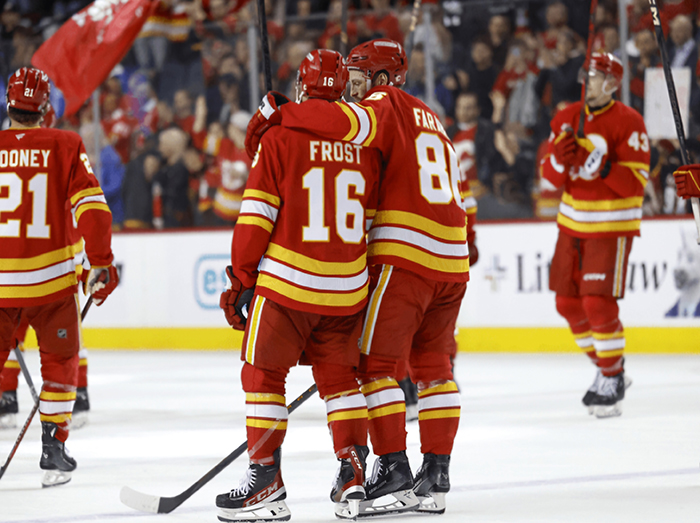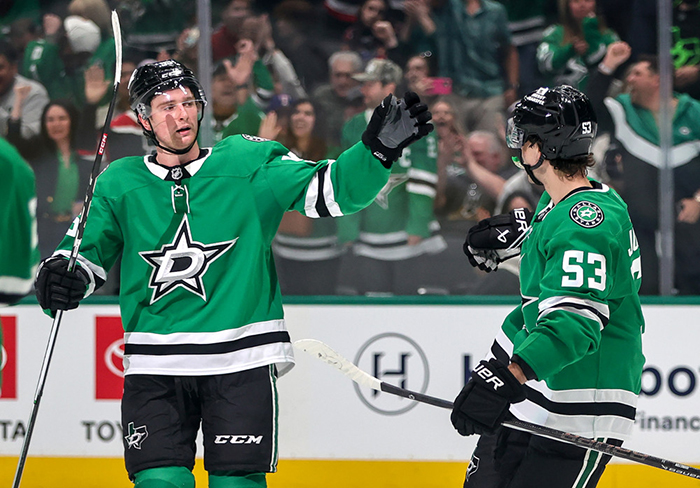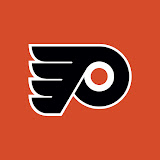The Flyers blog on Hockey Hot Stove is powered by Cover all Exteriors LLC : the No. 1 roofing and siding contractor in Philadelphia.
Last week, we kicked off a series of blogs on the systems fans can expect the Flyers to employ under new head coach Rick Tocchet. Part One of the series looked at the box-plus-one defensive zone coverage system. Today, we’ll talk about how Tocchet’s teams in Arizona and Vancouver organized breakouts from the defensive zone to transition to offense.
Tocchet breakouts: A straightfoward system
While not every Flyers player is used to the box-plus-one system of zone defense (as opposed to man-to-man defense), they’ve all been in a meat-and-potatoes breakout system similar to Tocchet’s. It’s not so much about the X-and-0 aspects but rather the emphasis on executing with quickness and awareness of when to leave the defensive zone.
Option One, of course, is for a defenseman to find the open forward and get him the puck as quickly as possible. The backup option is to chip the puck out of the defensive zone and try to win possession in the defensive zone. There’s not really much more to it than that, but we can break it down a little further.
Flyers player assignments on breakouts
- D-to-D passes: Tocchet teams tend to use multiple passes from one defenseman to the other when there is time to organize the rush and send the puck ahead to a forward. If there isn’t a main target or short-range safety valve available, the defense either chips the puck high off (hopefully not over!) the glass for the forward to skate into to executes a high flip for neutral zone recovery. It’s nothing unfamiliar to players or fans who watch hockey regularly. Tocchet teams tend to prefer going high off the glass as a Plan B but it’s not exclusive. The D man has some discretion here.
- Strong-side winger: The strong-side winger (the one on the same side as the puck) typically presents himself as a target for a pass from a defenseman. He posts up on the boards and awaits a quick pass.
- Weak-side winger: As per normal, the weak-side winger is often the first to leave the defensive zone. If there’s a stretch pass to be made, he’s the recipient. If the puck goes off the glass, he’s the one expected to skate to take and take possession.
- Flyers center: Tocchet’s systems assign a lot of responsibilities to the center, both with and without the puck. On breakouts for the defensive zone, the center is the last forward to leave the defensive zone. He is the puck support man, swinging through the middle of the ice. He also aids the defensemen on the five-man-unit as a safety valve on reversals.
- Reversals: These are designed to alleviate opposing forechecking pressure. One defenseman picks up the puck and skates behind the net toward his defense partner. This is option A. Conversely, a reversal has a different pattern. Instead of making a D-to-D pass, the defenseman with first posession drop it back for the center. At his discretion, the center can pick up the puck and skate with it himself or pass it ahead to the strong-side winger on posted on the defensive half-wall.
In our next series breakdown, we’ll talk about the offensive zone forechecking system that Tocchet teams tend to prefer. After that, we’ll discuss the neutral zone forecheck. The final installment, which will run shortly before the start of NHL training camp, will look at Yggi Svejkovsky’s power play.
Breakouts 101: What Can Go Wrong?
Norcan Hockey does a good series of instructional videos geared for minor hockey coaches to instill in their players. These are the foundational pieces for players as they move up the hockey ladder. This video, entitled “5 Reasons Your Breakout Sucks” looks at some of the most common causes when teams struggle on breakouts. While geared for grass roots hockey, there are principles that apply all the way up to the NHL level of things that can go wrong on a breakout. It’s worth a watch.



